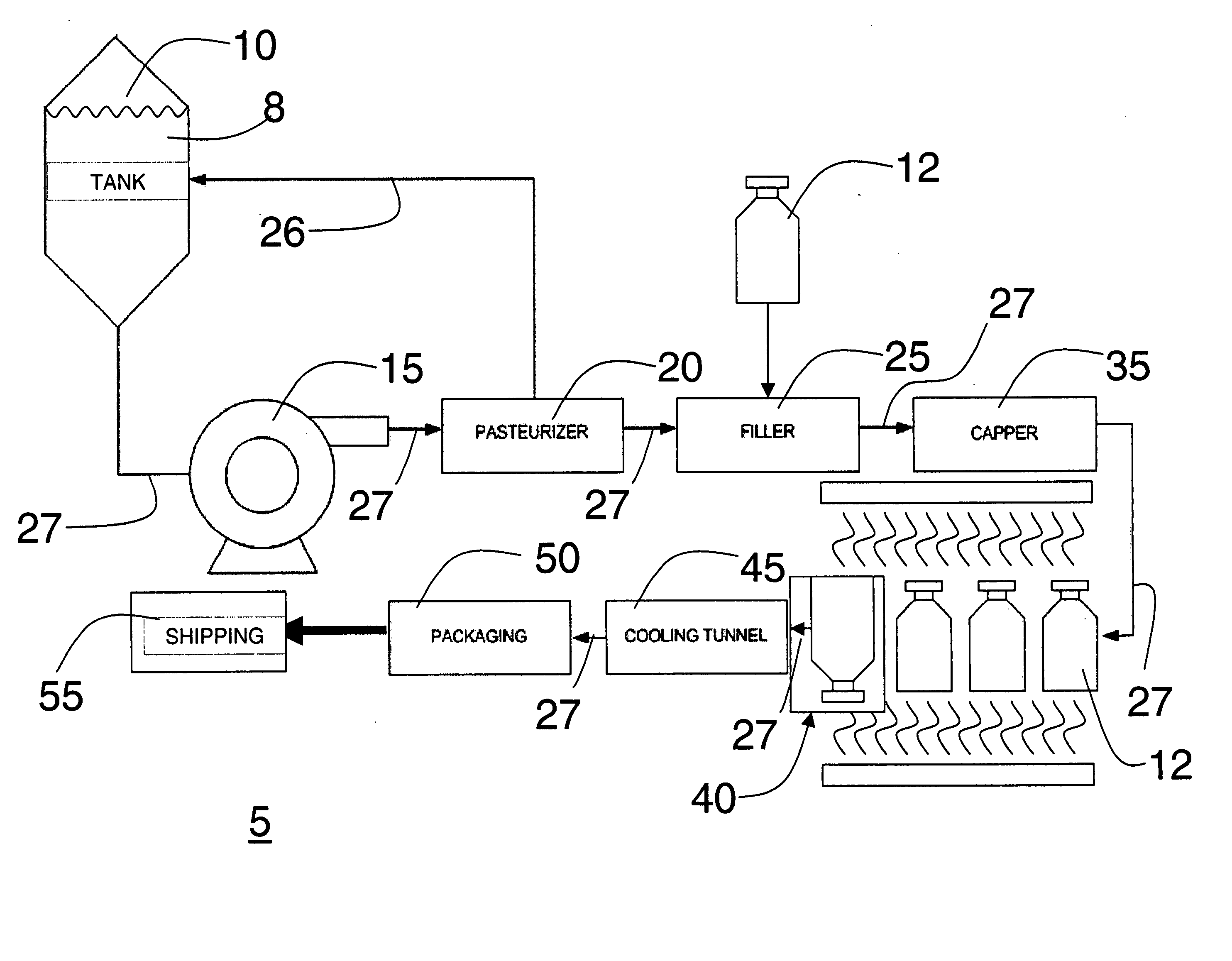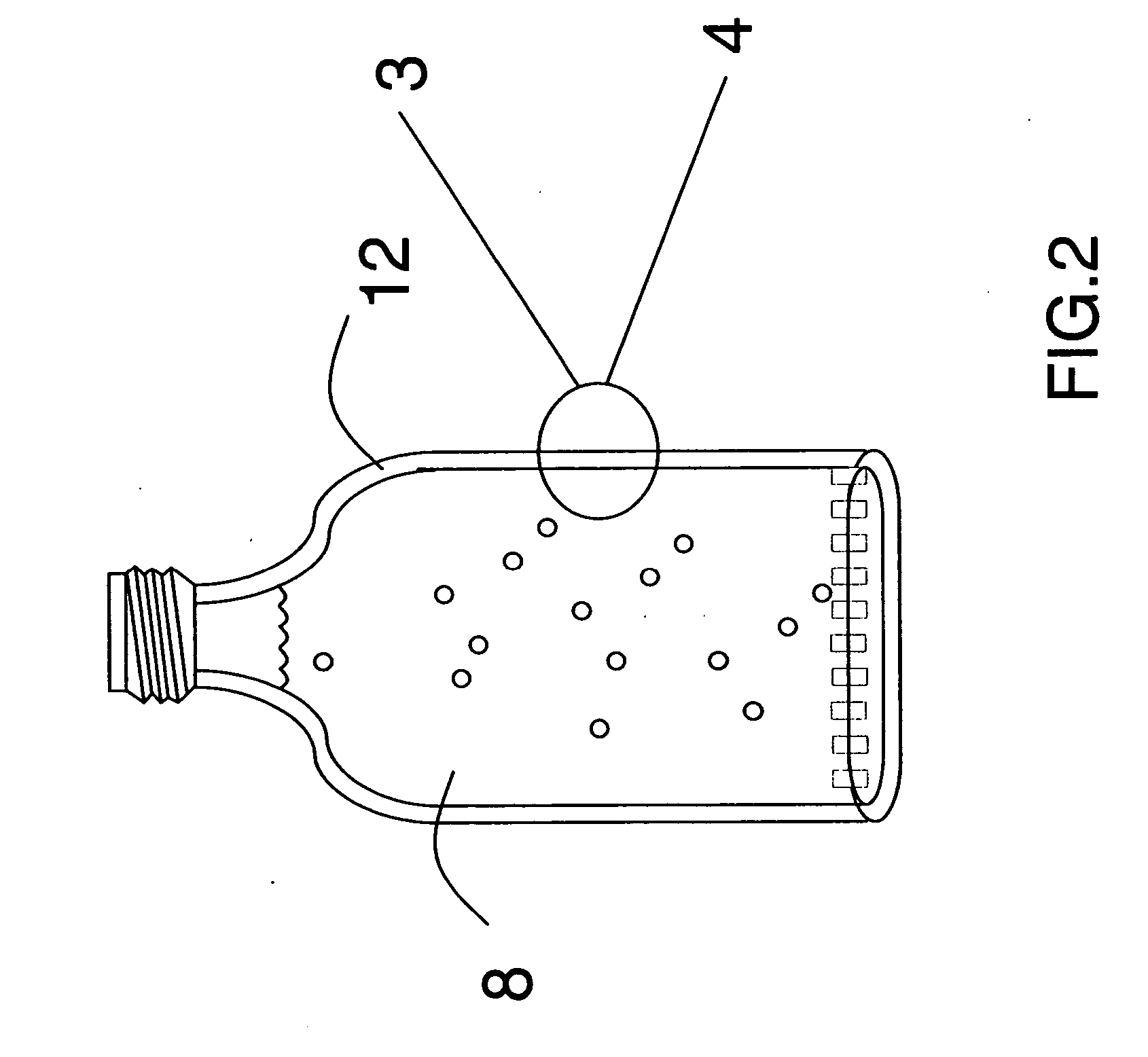Use of derivatized nanoparticles to minimize growth of micro-organisms in hot filled drinks
a technology of derivatized nanoparticles and hot filled drinks, which is applied in the direction of nuclear engineering, water/sewage treatment by ion exchange, and separation processes, etc., can solve the problems of affecting the taste, adding to the cost of the filling process, and contaminating the environment with hazardous microorganisms
- Summary
- Abstract
- Description
- Claims
- Application Information
AI Technical Summary
Benefits of technology
Problems solved by technology
Method used
Image
Examples
Embodiment Construction
[0035] Referring to FIG. 1, there is illustrated a schematic view of a prior art system of a “hot fill” process 5 for bottling certain types of liquid nutrients 8 such as isotonic beverages having a pH equal to or greater than about 2.5 made in accordance with the prior art. Drinks such as Gatorade™ or PowerAide™, fruit drinks, and teas are examples of isotonic beverages. The bottling process typically begins with cleaned and sanitized containers such as bottles 12 formed from glass or using a polymer as described in FIGS. 2 and 3. The “hot fill” process of FIG. 1 may also be used for filling various other containers, for example but not limited to, bags, stand up pouches, juice boxes, cans, etc. After formulation, the beverage 8 is usually stored in a tank 10 until it is pumped via a pump 15 through a pasteurizer 20 to a filler station 25. Excess beverage may be pumped back to the tank 10 via line 26. Although these systems may integrate one or more functions, such systems are typi...
PUM
 Login to View More
Login to View More Abstract
Description
Claims
Application Information
 Login to View More
Login to View More - R&D
- Intellectual Property
- Life Sciences
- Materials
- Tech Scout
- Unparalleled Data Quality
- Higher Quality Content
- 60% Fewer Hallucinations
Browse by: Latest US Patents, China's latest patents, Technical Efficacy Thesaurus, Application Domain, Technology Topic, Popular Technical Reports.
© 2025 PatSnap. All rights reserved.Legal|Privacy policy|Modern Slavery Act Transparency Statement|Sitemap|About US| Contact US: help@patsnap.com



